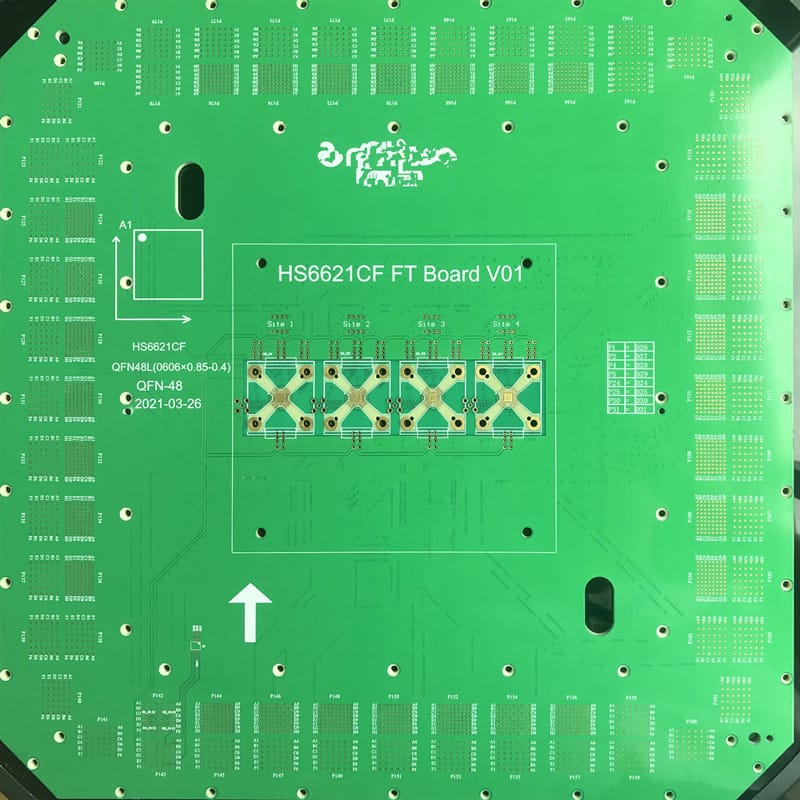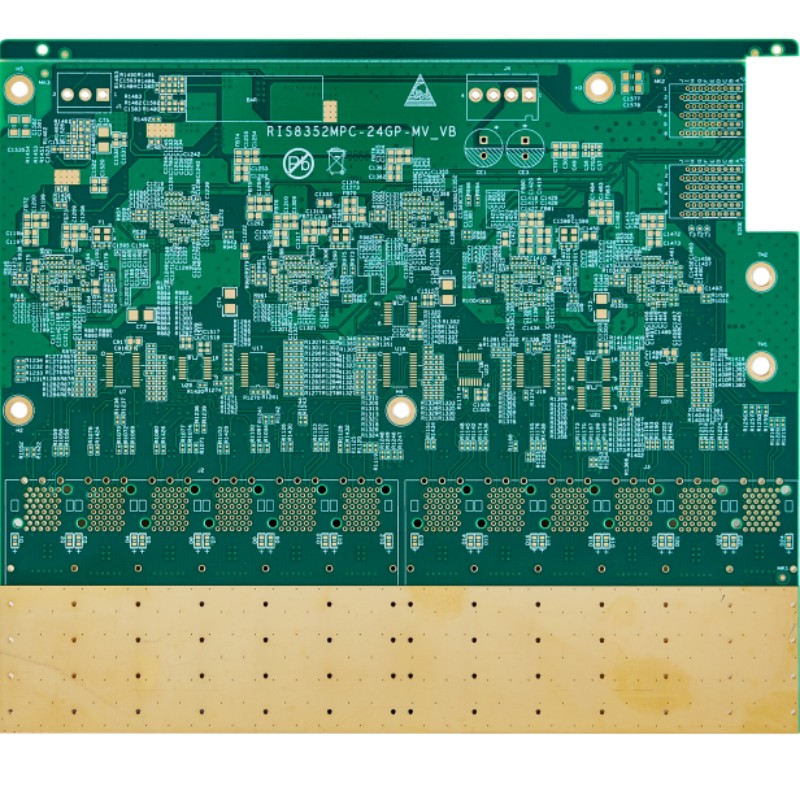Printed circuit boards provide an infrastructure to support and connect electronic components, and ... [+] are used in almost every electronic device
I recently visited Amphenol APH Printed Circuits in Nashua, New Hampshire. The factory manufactures sophisticated printed circuit boards (PCBs), predominantly for military, commercial aerospace, and other high-end applications. It is a little gem in terms of capabilities under one roof, but it is also a reflection of the state of the domestic printed circuits industry and the critical dependence the country has on imports. Surface Mounting Technology

A printed circuit board is usually a rigid sheet of material that is used to mechanically support electronic components connected via wiring that is “printed” on the surface or buried inside. Originally electronic components had wire leads and they were connected together by soldering them to terminal strips, but the idea of plating or printing wiring onto a supporting material was appealing because it would make systems easier to mass produce. The U.S. military first started using printed circuits during World War II in the production of proximity fuses. These needed to be tough enough that they could be fired from a gun, yet be produced in large quantities. This was an early demonstration of the importance of the technology to the military.
After the war, PCBs started to come into commercial use, although it wasn’t until the late 1950s and early 1960s that their consumption really took off. Early PCBs were made of phenolic, and had copper plating on one side onto which the wiring was “printed” with a photolithographic process. Holes were drilled through them and component leads were inserted and then soldered. Phenolic PCBs were superseded by fiberglass epoxy with copper on both sides. The need for more and denser connections led to multilayer sandwiches of printed layers that were carefully aligned and laminated. Wiring on different layers were connected with “vias” – tiny holes that were filled with metal that connected wiring traces between different layers. These days many boards contain “buried vias” which means they connect interior layers but holes are hidden from the outside layers. The boards have also generally gotten smaller, and are often flexible. If you open up an iPhone, you’ll find many rigid and flexible PCBs.
The Amphenol Nashua factory occupies 214,000 square feet, and the company does everything from design and manufacture of raw boards to assembling the components on them and testing finished systems. The division has two sister factories in Mesa, Arizona and Nogales, Mexico. Nashua primarily produces boards that go into military aircraft for applications like avionics, phased array radar systems, and power and signal distribution subsystems. They also have the capability to make very large boards, much larger than the industry standard 18x24 inch “panel” sizes for multilayer boards that are used to produce consumer electronics products like phones or personal computers. Most high-volume production is geared to these standard panel sizes, so going larger necessitates different equipment.
The Nashua facility can handle boards up to 24 x 54 inches. My host, Kurt Whitcomb the general manager, showed me a typical board that had 300,000 laser-drilled vias that had probably 28 layers and 3 mil (0.003 inch) wide lines. As we walked around the factory, I saw high speed laser drills that could cut millions of holes on a single large board. A modern dual source laser drill can drill 3,500 holes per minute, which is a pretty amazing (and expensive) tool. Laser drills typically can make vias that range from 0.075 – 0.15 mm in diameter. Thus, if you are going to laminate multiple layers together after you drill them, you have to do so with great positional accuracy or the connections you were expecting to make aren’t going to be aligned in the right places when you glue the layers together. This is hard enough on an industry standard sized board, but when you get the really large ones this becomes much more critical. Amphenol uses X-ray tools to get this precisely right.
The other thing that was impressive was the boards that handled high speed signals. These can be used for radiofrequency and microwave applications, but also high-speed digital backplanes used in computing and communications equipment. When signaling frequencies get very high, you have to worry about effects related to the size and placement of components and wiring connections as well as the properties of the materials you use. This is because the size of components and their spacing is a significant fraction of a wavelength of the signals you are dealing with. It takes careful design and manufacture, and not every commodity PCB maker can do this kind of work.
The F-35 fighter depends on numerous printed circuit boards in a wide range of systems. (Photo by ... [+] George Frey/Getty Images)
Another interesting aspect of many military and aerospace systems is that they still use solder that contains lead. Lead was phased out of commercial systems long ago, but the military still requires leaded solder because the joints are less brittle and can tolerate extreme temperatures better. Lead-free solders also require higher processing temperatures, which puts greater stress on components during processing. Amphenol handles all of this for its customers, including getting lead-free components adapted, although this has significant implications for the lead time for procuring and preparing them. And military customers need full traceability to understand the provenance of all components, something that Amphenol provides.
Amphenol is one of approximately 150 remaining domestic PCB suppliers today, down from more than 2,000 in the year 2000 when offshoring really started to gather pace. Domestic suppliers today produce 4% of PCB demand, down from around 30% in the year 2000 according to the Printed Circuit Board Association of America (PCBAA). This is a far lower percentage than the 12% U.S. share of global semiconductor chip production (and higher share of consumption) that is currently getting so much attention in Washington and globally. The obvious reason is cost. Companies like Amphenol have focused on high-end applications because they can’t hope to compete with Asian competitors who have much lower labor costs, material costs, and can often take advantage of subsidized capital expenditures.
And this business is capital intensive. As we walked around the factory, I asked Mr. Whitcomb about how quickly they could expand production if they needed to. He showed me the more or less continuous upgrades the company had been investing in over the years, including new electroless copper deposition baths and laser direct imaging systems. It takes investment, and he explained, “The military is running out of shops that can do that high-end work, and that's where the investments are needed.” Unless a customer is willing to sign a contract for volume that is three or four years out, it’s hard for a supplier to invest today. And commercial customers, when quoted significantly higher prices, more often than not pass on domestic sourcing and go back overseas. Since PCBs are critical to electronics, and electronics are in virtually everything today, one has to wonder when we are going to feel the impact of a sudden shortage?
Th Department of Defense knows the criticality of PCBs. Currently stuck in Congress is H.R. 3249, the Protecting Circuit Boards and Substrates Act, which would attempt to level the playing field for the domestic PCB industry. It would offer a tax credit for the purchase or acquisition of PCBs made in the U.S., as well as incentives for R&D, and for constructing, expanding, or modernizing a PCB facility. But like so many other stuck bills, it probably isn’t going anywhere this year.
I recently have been reading Problems of Accelerating Aircraft Production During World War II, a research report published by the Harvard Business School in 1947. The report started out noting that “after five years in which the war [in Europe] has been headline news, it is difficult to appreciate the public apathy towards national defense that prevailed before the collapse of France. The United States made no serious effort to prepare for large-scale air warfare until June 1940.” On May 16, 1940, President Roosevelt made the request of the aircraft industry to produce at least 50,000 planes a year, and on January 7, 1942, he increased that request to 125,000 units. 1943 production ended up totaling 85,946 planes of all types, a remarkable accomplishment that took advantage of a broad infrastructure in the country of aircraft and automotive manufacturing.

Pcb Fabrication And Assembly One has to wonder how quickly we could ramp up domestic production of PCBs if we had to. It would be very expensive, and few companies have the resources to do so. Even then, the lead times to get the equipment would make this a challenge. We probably should be thinking about this problem now.